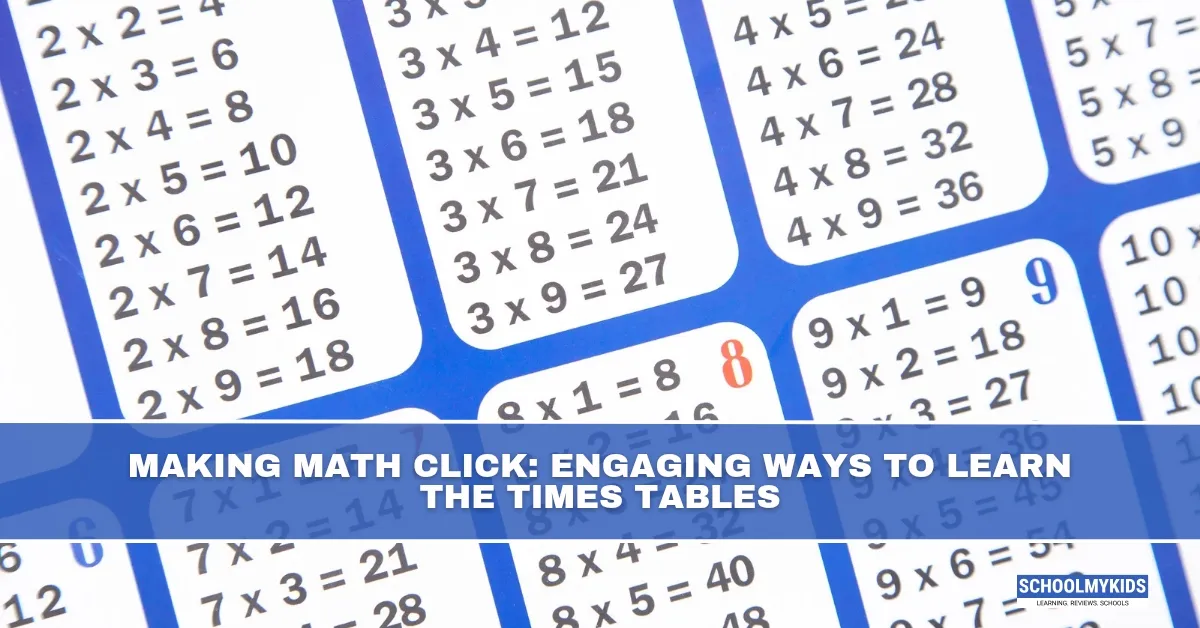Picture this: a child sits at the kitchen table, pencil in hand, eyes welling with tears as they struggle to remember if 7 × 8 equals 54 or 56. Around the country, this scene plays out daily as families navigate the challenging terrain of multiplication tables. It's a universal milestone in elementary education, but one that often brings frustration, resistance, and that dreaded declaration: "I hate math!"
The good news? Learning times tables doesn't have to be a battlefield. So, let us explore why times tables can be tricky for many children, what's actually happening in their developing brains, and most importantly, how parents and children can work together to make multiplication click through methods that feel more like play than work.
Why Learning Times Tables Is Hard for Kids
Multiplication is a big step. It’s not just about learning new numbers. It’s about understanding patterns, building memory, and feeling confident with math. First, let's acknowledge what you're up against.
- Memory overload: Kids are suddenly expected to memorize 100 different fact combinations (technically fewer with commutative properties, but still a lot!)
- Abstract thinking: The concept that 3 × 4 means "three groups of four" isn't immediately intuitive to many children.
- Fear of failure: Nothing shuts down learning faster than the anxiety of getting it wrong in front of classmates.
- Boring practice methods: Traditional flashcards and worksheets don't exactly scream "fun" to most eight-year-olds.
What's Happening in Your Child's Brain
Children aren't being stubborn when they struggle with times tables. Their brains are working hard to create neural pathways that connect these number relationships. Each time they practice a fact, that pathway gets stronger. Eventually, they'll retrieve 7 × 8 = 56 automatically, without conscious calculation – but this takes time and repetition.
Many kids hit a wall around the 6s, 7s, and 8s facts. This is completely normal! These middle facts have fewer obvious patterns and require more dedicated practice.
Making Multiplication Click: Practical Strategies
1. Start With Understanding, Not Memorization
Before drilling facts, make sure your child grasps what multiplication actually means. Try this:
- Use small objects (candies, blocks, coins) to show that 4 × 3 means "four groups with three items in each group."
- Draw arrays on paper (rows and columns) to visualize multiplication facts
- Connect to real life: "If each person needs 2 cookies and we have 5 people, how many do we need total?"
2. Find Your Child's Learning Style
Different kids click with different approaches:
- For visual learners: Create colorful multiplication charts together, or try multiplication coloring sheets where solving problems reveals a picture.
- For physical learners: Try "Multiplication Hopscotch" – draw a number grid outside and have kids jump to the answer. Or use "Finger Multiplication" for facts 6-10 (there are great YouTube tutorials for this method).
- For musical learners: Multiplication songs work wonders! Many parents report breakthrough moments when their children started singing their times tables.
- For gaming enthusiasts: There are excellent multiplication apps and games that feel more like play than practice.
3. Break It Down Into Manageable Chunks
Don't tackle all the facts at once. Try this sequence:
- Start with 1s, 2s, 5s, and 10s (the easiest patterns)
- Move to 3s, 4s, and 9s (which have helpful tricks)
- Finally conquer the tougher 6s, 7s, and 8s
Celebrate each set mastered before moving to the next!
4. Make It Relevant and Fun
Turn multiplication into games:
- "Multiplication War" with playing cards
- "Times Table Bingo"
- Score-keeping during family games (multiplying points)
- Timing challenges against themselves (not others!)
5. Use Real-Life Math
Show your child that multiplication is everywhere, not just in school.
- In the kitchen: “We need 3 muffins for each person. How many for 4 people?”
- At the store: “If this costs $5, how much would 3 cost?”
- With toys: “You built 4 towers with 6 blocks each—how many blocks is that?”
6. Address Anxiety Directly
If your child shows signs of math anxiety:
- Normalize mistakes: "When I was learning these, I mixed up 7×8 all the time!"
- Practice in private before classroom situations
- Focus on progress, not perfection
- Take breaks when frustration builds
Conclusion
Remember that your attitude toward math matters greatly. Even if you struggled with multiplication as a child, try to approach it with curiosity and positivity now. Phrases like "I was never good at math either" can unintentionally give permission to give up.
Learning times tables is going to take some time. Some children will need weeks of consistent practice before facts become automatic. But with the right approach—one that combines understanding, engagement, and patience—your child won't just memorize their times tables; they'll build confidence that carries forward into all their future math learning.
The day your child proudly announces, "I know all my times tables!" is worth every minute of practice. And the best part? You might just find yourself having fun along the way. So go ahead—make a mess with blocks, dance to a math song, or turn snack time into multiplication practice. Whatever works for your child is the right way.









Be the first one to comment on this story.